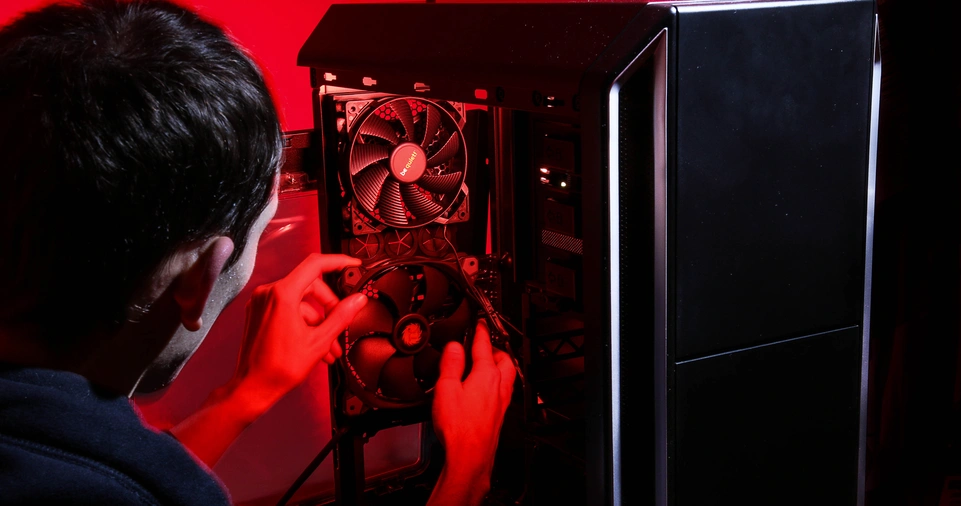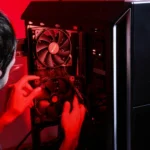Building a budget gaming PC is an excellent way to enjoy high-performance gaming without spending a fortune.
By selecting the right components and assembling them yourself, you can customize a system that meets your gaming needs and leaves room for future upgrades.
Whether you’re aiming for smooth 1080p gameplay or looking to build a PC for both gaming and streaming, this guide provides a step-by-step approach to building a powerful rig at a fraction of the cost of prebuilt systems.
We’ll cover essential components, tips to save money, and key considerations to ensure you get the best performance for your budget. Let’s dive into the details and start building your dream gaming PC.
Why Build a Budget Gaming PC?
Before jumping into the how-to, let’s cover the benefits of building your own PC—especially on a budget:
- Cost savings compared to prebuilt options.
- Customization based on your gaming needs.
- Easier upgrades in the future.
- Learning experience and sense of accomplishment.
With smart decisions, you can build a rig that handles 1080p gaming, eSports titles, and even some AAA games.
Key Considerations Before You Start
Before buying components, consider these key factors:
- Budget: Decide on a max spend (e.g., $500–$800).
- Target Resolution and Frame Rate: 1080p at 60 FPS is ideal for budget builds.
- Games You Play: Some games are CPU-heavy (e.g., Civilization), while others rely more on the GPU (e.g., Call of Duty).
- Upgradability: Choose parts with future-proofing in mind (e.g., AM5 or LGA1700 sockets).
ALSO READ: How to Protect Your Data Online: A Complete Guide
Essential Components for a Budget Gaming PC

Here’s a breakdown of the core parts you need and what to look for on a budget.
CPU (Processor)
The CPU is the brain of your system. For gaming, a quad-core or hexa-core CPU with decent clock speeds is ideal.
| Budget CPU Options | Cores/Threads | Ideal For | Price Range |
|---|---|---|---|
| AMD Ryzen 5 5600G | 6/12 | Entry AAA/Indie | $120–$150 |
| Intel Core i5-12400F | 6/12 | Gaming/Streaming | $150–$170 |
If you’re using integrated graphics initially, the Ryzen 5 5600G is a solid pick.
GPU (Graphics Card)
This is the most critical component for gaming. While GPUs are costly, you can find budget-friendly options that deliver excellent 1080p performance.
| Budget GPU Options | VRAM | Performance | Price Range |
|---|---|---|---|
| NVIDIA GTX 1660 Super | 6GB | 1080p High | $130–$180 |
| AMD Radeon RX 6600 | 8GB | 1080p Ultra / 1440p Medium | $180–$220 |
| Intel Arc A750 | 8GB | Great value/performance | $200–$230 |
You can also find used GPUs at reduced prices—but always buy from reputable sellers.
Motherboard
Your motherboard needs to match your CPU socket and form factor (ATX, mATX, or Mini-ITX).
| CPU Brand | Socket | Budget Motherboards |
|---|---|---|
| AMD | AM4 | B450, B550 |
| Intel | LGA1700 | B660, H610 |
Look for features like M.2 support, DDR4 RAM, and at least two RAM slots.
RAM (Memory)
For modern gaming, 16GB of RAM is ideal.
| RAM Type | Size | Speed | Cost |
|---|---|---|---|
| DDR4 | 16GB (2x8GB) | 3200 MHz | $35–$50 |
Make sure your motherboard supports the RAM speed you’re buying.
Storage (SSD/HDD)
SSDs are faster and more reliable than traditional HDDs. NVMe SSDs offer blazing speeds and should be your first choice.
| Type | Capacity | Speed | Price |
|---|---|---|---|
| NVMe SSD | 500GB | Up to 3500 MB/s | $30–$50 |
| SATA SSD | 1TB | Up to 550 MB/s | $40–$60 |
Start with 500GB or 1TB depending on your game library.
Power Supply (PSU)
Never cheap out on your PSU. Look for 80+ Bronze certified models.
| Wattage | Certification | Price |
|---|---|---|
| 500W–600W | 80+ Bronze | $40–$60 |
Check your GPU and CPU requirements and use a PSU calculator to determine the exact wattage needed.
Case (Chassis)
Choose a case with good airflow and space for your components. A budget-friendly mid-tower is great for most builds.
| Type | Price | Notes |
|---|---|---|
| Mid-Tower | $40–$70 | Better cooling, more space |
| Mini-Tower | $30–$50 | Compact, fewer upgrade options |
Cooling and Thermal Paste
Stock coolers are sufficient for most budget CPUs. If you plan to overclock, consider aftermarket coolers.
| Cooling Option | Price | Notes |
|---|---|---|
| Stock Cooler | Included | Good for Ryzen/i5 |
| Aftermarket Cooler | $20–$40 | Better thermals and noise |
Optional But Recommended Add-ons
- Wi-Fi Adapter or PCIe Card: If your motherboard lacks built-in Wi-Fi.
- Extra Case Fans: For better airflow and longevity.
- RGB Lighting: For aesthetics (if desired).
ALSO READ: How to Improve Your Sleep Naturally?
Building Your Budget Gaming PC (Step-by-Step)

Step 1: Prepare Your Workspace
- A clean, static-free surface
- Magnetic screwdriver
- Anti-static wrist strap (recommended)
Step 2: Install the CPU
- Align the CPU with the socket on the motherboard.
- Gently lock it in place with the retention arm.
Step 3: Attach the RAM
- Insert RAM sticks into the DIMM slots—listen for the click.
Step 4: Mount the Motherboard
- Secure it into the case using standoffs and screws.
Step 5: Install the Storage
- Use the M.2 slot or SATA ports for your SSD.
- Screw it securely.
Step 6: Install the GPU
- Insert the GPU into the top PCIe x16 slot.
- Secure with screws.
Step 7: Connect Power Supply
- Plug in the 24-pin ATX cable to the motherboard.
- Connect 8-pin CPU power.
- Connect power to GPU (if needed).
Step 8: Cable Management
- Route cables neatly behind the motherboard tray.
- Use zip ties for clean setup and airflow.
Step 9: First Boot and BIOS Setup
- Connect to a monitor and power it on.
- Enter BIOS (usually
DELorF2). - Set the boot drive and enable XMP for RAM.
Installing the Operating System
- Download Windows or Linux to a USB drive using a tool like Rufus.
- Plug it in, reboot, and follow installation prompts.
Tips to Maximize Your Budget
| Tip | Benefit |
|---|---|
| Shop used or refurbished parts | Huge savings |
| Wait for sales (e.g., Black Friday) | Big discounts |
| Choose parts with upgrade paths | Futureproofing |
| Use onboard GPU initially (APUs) | Save money now, upgrade later |
| Prioritize GPU and CPU | Core performance drivers |
Example Budget Gaming PC Build (2025)
| Component | Model | Price |
|---|---|---|
| CPU | AMD Ryzen 5 5600G | $130 |
| Motherboard | MSI B450M Pro VDH Max | $70 |
| RAM | 16GB DDR4 3200MHz | $40 |
| SSD | 1TB NVMe | $50 |
| GPU | Radeon RX 6600 | $200 |
| PSU | EVGA 600W 80+ Bronze | $50 |
| Case | NZXT H510 | $60 |
| Total | — | $600 |
This build can run most modern games at 1080p high settings with 60+ FPS.
Common Mistakes to Avoid
- Ignoring PSU quality – Bad PSU can damage components.
- Mismatched parts – Use PCPartPicker.com to verify compatibility.
- Overpaying for fancy cases – Prioritize performance.
- Not updating BIOS – May cause compatibility issues.
- Skipping airflow considerations – Leads to overheating.
Upgrade Paths for the Future

| Upgrade | Reason |
|---|---|
| GPU | For higher FPS and better graphics |
| RAM | 32GB for multitasking or streaming |
| Storage | Add more SSDs or HDDs |
| CPU | Upgrade to next-gen CPUs on same socket |
| Cooling | Quieter and better performance |
ALSO READ: How to Choose the Right Gaming Platform: A Comprehensive Guide
Conclusion
Building a budget gaming PC in 2025 is more attainable than ever. With smart choices and a little research, you can create a powerful machine that handles modern games smoothly without draining your wallet.
Not only do you save money, but you also gain a deeper understanding of how your system works, making upgrades and maintenance much easier down the line.
Whether you’re diving into Apex Legends, exploring Elden Ring, or just want to play indie hits, a well-built budget PC delivers more value than any console or prebuilt system in the same price range.







